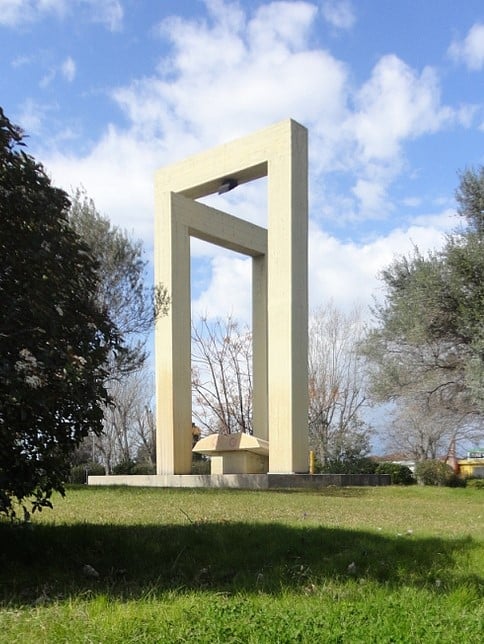Ημερομηνία: Τρίτη, 25 Οκτ, 2022
Ώρα: 17:00 – 18:30
Αίθουσα: Αίθουσα Σεμιναρίων 1 (Κτήρια Χημικών Μηχανικών)
Διεύθυνση Διαδικτυακής Μετάδοσης: https://upatras-gr.zoom.us/j/94117599126?pwd=Rks4aHlDcVFRNG5UaEVaU2o5ak81QT09
Ομιλητής: Dr. Mária Lbadaoui-Darvas (Laboratory of Atmospheric Processes and their Impacts (LAPI), Ecole Polytechnique Federale de Lausanne, Switzerland)
Τίτλος Ομιλίας: Adsorption Nucleation Theory: a unified theory for quantitative predictions of heterogeneous nucleation of liquid water and ice
Περίληψη
Clouds are central elements of the hydrological cycle and climate. They are responsible for precipitation and strongly impact global and regional temperature by reflecting incoming solar radiation, and absorbing heat emitted from Earth. The amount of ice contained in clouds determines much of their properties and effects, and cloud ice is mostly formed by heterogeneous nucleation (HIN), where insoluble airborne particles (such as dust, biological particles and soot) catalyse freezing. Current HIN models either rely on empirical fits to laboratory/field data, or are based on the century-old classical nucleation theory (CNT), which assumes that ice formation is a single-step process and can deviate from observations by orders of magnitude. Despite its importance, the description of HIN in climate models is vastly incomplete and remains one of the major challenges that impedes further progress in estimates of anthropogenic climate change. We propose that molecular simulations provide the required insight on how to solve the ice nucleation challenge. We show that the interactions of water vapor (physisorption) with insoluble surfaces (found in ice nuclei) may provide the missing link towards reliable IN predictions: these interactions constrain the amount of water available at the particle surface, and its energy state from which the nucleation rate can be derived. Specifically, we find that water that freezes first adsorbs on ice nuclei surfaces, forming liquid droplets that fluctuate randomly up to the point where they freeze. With this fundamental insight, we adopt a new macroscopic theory of nucleation, Adsorption Nucleation Theory (ANT), to describe ice formation using these fundamental steps: droplet wise adsorption and droplet fluctuations, without the invoking the classical nucleation theory. ANT requires multilayer adsorption isotherms (in our case, Frenkel-Halsey-Hill isotherms) with parameters constrained from liquid water adsorption and has already shown to describe the process of droplet nucleation in liquid water clouds. ANT also offers the unprecedented ability to provide a unified modelling framework for heterogeneous ice and droplet nucleation. We conclude by showing using first principles (classical molecular dynamics and Monte Carlo simulations) that ANT works for droplet and ice nucleation of water on black carbon, one of the most debated of icenucleating particles.
Σύντομο Βιογραφικό Ομιλητή
Mária Lbadaoui-Darvas obtained her Ph.D. in 2012 in a joint Ph.D. program between the University of Bourgogne-Franche-Comté (Besançon, France) and the ELTE University (Budapest, Hungary). Her early research focused on molecular simulations of liquid surfaces, biomembranes, and phases in organic nanoaerosols. She was a postdoctoral fellow at the University of Porto, where she studied transport phenomena in atmospheric aerosol. At presents she is a scientist at the Laboratory of Atmospheric Particles and Their Impacts at EPFL, where her research focuses on developing a new theoretical framework to describe aerosol-water interactions and heterogeneous ice nucleation using molecular simulations, using advanced atomistic simulations to understand the formation of atmospheric particles and atmospheric oxidation of organic molecules, and, the impact of aerosol pH on the structure of membranes of respiratory enveloped viruses (influenza virus and COVID) contained in aerosols emitted in exhaled breath. She is author of more than 30 peer reviewed publications and beneficiary of the Spark funding scheme of the Swiss National Science Foundation as well as the post-doctoral fellowship of the Portuguese Science and Technology Foundation.
Δείτε περισσότερα στον παρακάτω σύνδεσμο:
https://www.chemeng.upatras.gr/el/seminar-rooms/91/2182
______________
George Pasparakis
Associate Professor
Department of Chemical Engineering

